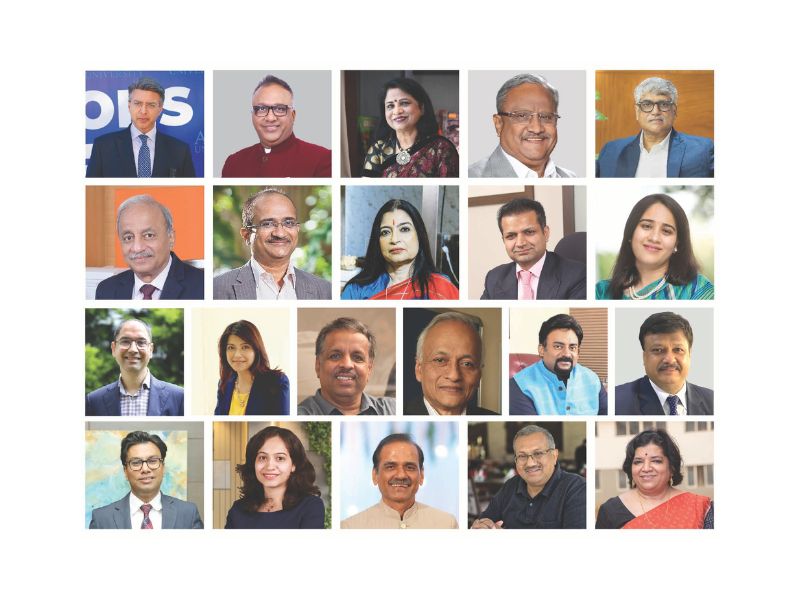writes Dilip Thakore
New genre private university leaders: globally competitive mindsets
During the EducationWorld India Higher Education Rankings Awards event staged in Delhi on April 25 to felicitate and award undergrad colleges and universities which had topped the EW India Higher Education Rankings 2025-26 league tables (EW April-May), a panel discussion on the subject ‘Why haven’t any of India’s 1,168 universities and 45,000 colleges invented/ideated a globally celebrated game-changer product or service in 77 years?’ failed to provide satisfactory answers.
The panel featuring half a dozen Vice Chancellors and Deans of top-ranked universities were unable to shed light on this query posed against the backdrop of Chinese hi-tech entrepreneur Liang Wenfeng crediting the ideation and invention of generative AI DeepSeek app which has shaken Silicon Valley, and emerged as a low-priced competitor to OpenAI’s ChatGPT and Google’s Gemini, to China’s innovative universities.
The choice of the subject placed before the panel was also driven by the reality that China, whose higher education system was way behind India’s in 1949, has emerged as a global manufacturing hub, in particular as the world’s largest producer of EVs (electric vehicles). In media interviews, Liang Wenfeng (40), a graduate of Zhejiang University and promoter-CEO of the Hangzhou DeepSeek Artificial Intelligence Basic Technology Research Co Ltd, has acknowledged that “fresh graduates and Ph D students” from China’s top-ranked Peking, Tsinghua, Zhejiang and Beihang universities contributed the core talent for the DeepSeek breakthrough. During the hour-long EW panel discussion, none of the high-powered panelists were able to explain why such a tribute to Indian universities has never emanated from India Inc. The consensus was that Indian universities are under-funded and unable to conduct deep, new knowledge creation research.
There is some substance in this cop-out. India’s annual outlay for R&D aggregates a mere 0.7 percent of GDP cf. 3.7 percent in the US, 2.68 percent in China and 5.21 percent in South Korea. As a result, India hosts a mere 15 researchers per 100,000 people cf. 423 in the US, 1,307 in South Korea and 185 in China.
“China has been years ahead in recognizing that talent is the new oil. Through flagship programmes like a Thousand Talents Plan (TTP) and Young Thousand Talents (YTT), China has systematically built a global pipeline for high-end scientific talent,” write Sheel Kapoor and Adiyta Sinha in an illuminating op-ed in the Economic Times (June 24), which details how government, academia and industry in the People’s Republic have focused on STEM (science technology engineering and math) research and innovation to transform modern China into a global industrial powerhouse in record time.
Expert opinion attributes Indian academia’s poor research and innovation record to the failure of higher education institutions (HEIs) to switch whole-heartedly from knowledge retention, memory-based pedagogies to experiential, projects-based learning which stimulates interdisciplinary education and improves students’ critical thinking and problem-solving skills.
There is substance in this criticism because all the socio-economic problems that plagued newly-independent India seven decades ago — chronic shortages of food, clothing, shelter, public education and health, low productivity and the law’s delay — are still awaiting resolution. And to a substantial degree, the fault is of the academy which has remained a mere spectator rather than active participant, in the half-hearted national development effort. Indeed, few if any big ideas, great inventions, disruptive technologies — on the lines of the jet engine, mobile telephony, the internet, even agriculture storage, processing and marketing in a predominantly agrarian economy — have emerged from the shady bowers of the academy after 77 years of teaching, learning, research and certification. It’s a sad state of affairs.
The silver lining is that in recent years — especially after the logic of the successful industry liberalization and deregulation initiative of 1991 began to be applied to the country’s moribund education sector in the new millennium — a new crop of next generation, globally benchmarked private universities promoted by focused, can-do edupreneurs and driven by highly-qualified, experienced Vice Chancellors, Deans and faculty have struck root in arid Indian soil. Driven by globally competitive mindsets and awareness that highly-developed human resources are the precondition of national development, new generation academic leaders are in a hurry to raise colleges and universities under their care to the highest global standards.
These HEI leaders offer hope of educating, skilling and releasing the stifled creative energy and enterprise of the world’s largest youth population to attain the national goals of Viksit Bharat and $30 trillion GDP by 2047. The institution development objectives and plans of selected go-getting higher education leaders most likely to succeed — who responded to EducationWorld’s call to stand up and be counted — are featured in the following pages of our cover feature.
Also Read: Private School Fees: Beware government regulation trojan horse
